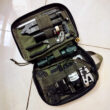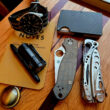While most of us try to get by with just our EDC pocket knives, there are a few common tasks that a knife just isn’t cut out to do. OBSTRUCTURES designed their PRY/OPEN pocket tool to take the brunt of wear and tear on a knife from prying, scraping, poking and turning. Read more for my review of these “knife saviors” courtesy of OBSTRUCTURES.
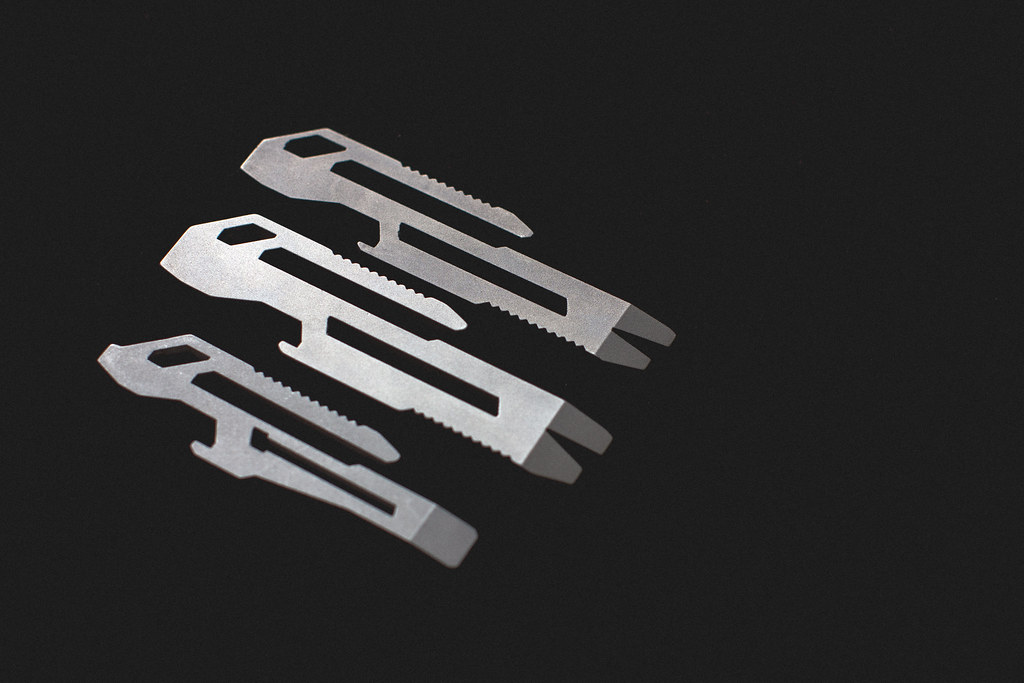
The PRY/OPEN line comes in two sizes: small and large (which this review will focus on), made of beadblasted stainless steel, and a limited edition titanium version of the large tool. The large stainless steel version is significantly more substantial feeling, weighing 48g at 3/16” thick compared to its slimmer titanium counterpart, which weighs next to nothing — barely under 16g at 1/8” thick. Both have a 3-3/4” length, putting them a bit outside ideal keychain tool length. The small tool, on the other hand, is more compact at 1/8” thick and 3” long, weighing in at 19g. All three tools share an industrial, geometric aesthetic in their design. They look great, but their well-executed and nicely machined straight lines and hard edges cause slight discomfort when gripping the tools.
On one end of the large PRY/OPEN, you’d find the first half of the tool’s namesake functions in a prybar with tips that double as screwdrivers. On the other side is a bottle opener and a long flathead driver/prying edge. A pocket clip runs along the back of the tool. Above the clip is a hole for a split ring, and in the body of the tool, a long slit that serves as an attachment point for an included cable ring. Ridges adorn the outer edges of the tool to bring together that rugged geometric look and provide a grippier texture in hand. The smaller tool lacks the split in its prying end and the long boxcutter/driver hybrid in favor of a smaller flathead driver. The PRY/OPEN doesn’t have wrenches for an oxygen tank, it doesn’t have O-rings to hold double-sided bits, or a sharp edge in a kydex sheath. For me, and likely for many other users, the large tool brings a sensible selection of functions for daily utility: opening boxes, opening bottles, driving screws, carrying keys, and occasional prying, scraping or prodding — without having to use and ruin your knife.
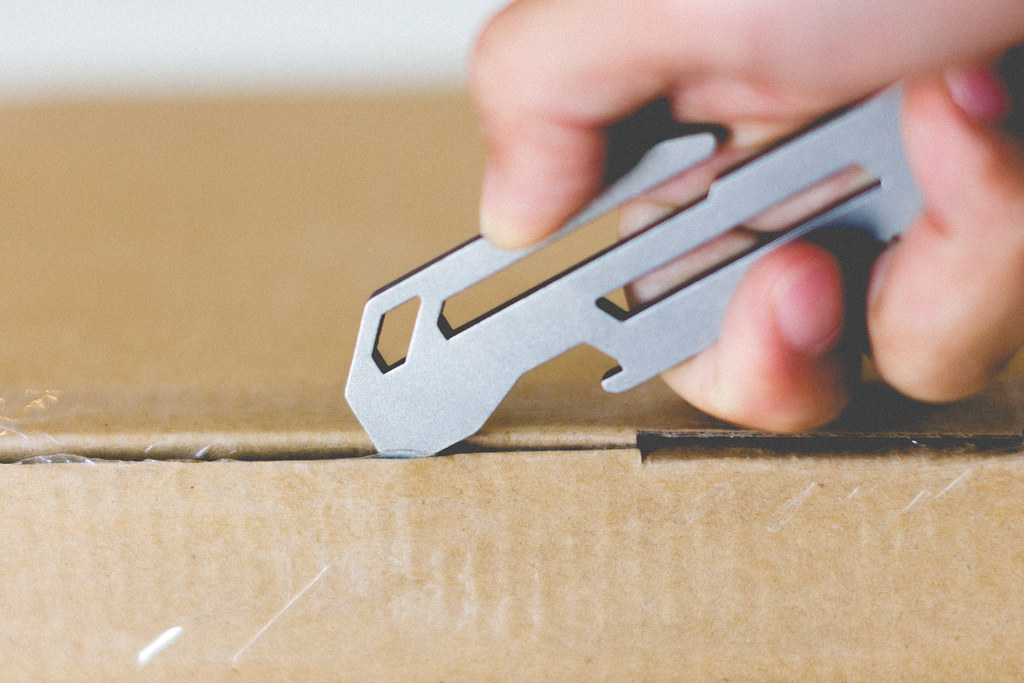
My favorite feature on the tool has to be the large, flat pry end. While it isn’t actually a sharpened edge, it’s able to rip through packaging tape when opening boxes, sparing your knife’s edge unnecessary damage and sticky residue. It also works well on larger flathead screws that are normally turned with a thumbnail or coin. The split pry end mostly saw use for its screwdriving function, which works decently, and not much for prying (it just isn’t a commonly needed function for me). While I can’t personally attest to it, OBSTRUCTURES demonstrates its prying ability on a paint can and a large nail, as well as the tool’s other functions in a short video. The bottle opener does its job well, especially on the large tool — the added thickness of the tool gives more of a grip when lifting caps compared to its thinner counterparts. However, the ridged gripping on the sides of the tool do tend to cause some discomfort when applying a lot of pressure to lift the cap.
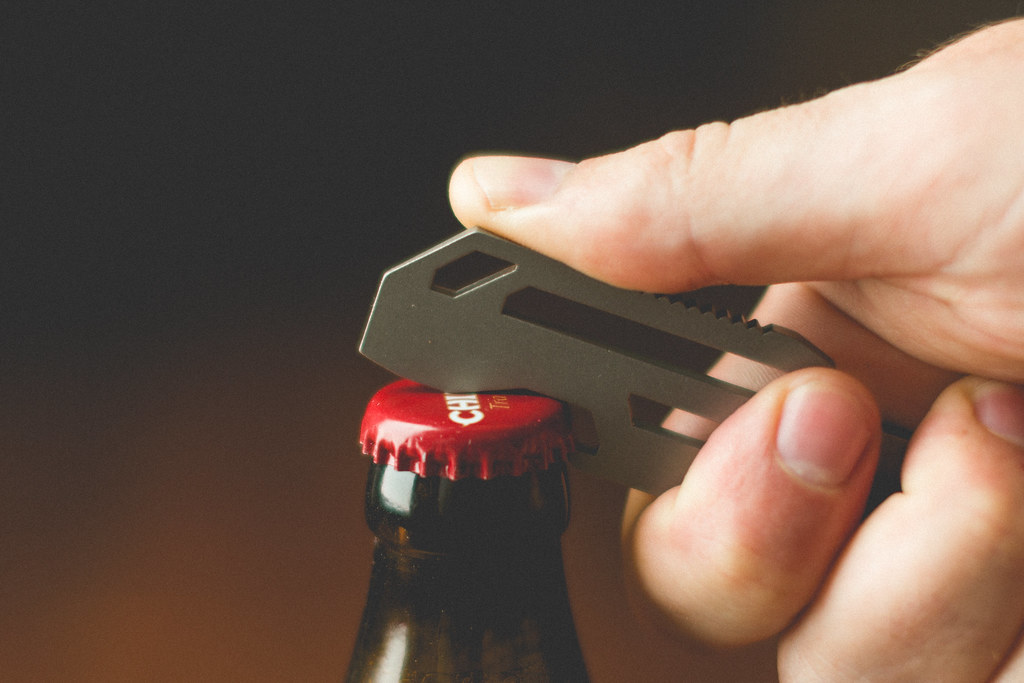
In addition to the fairly standard complement of tools in most one-piece multitools, the PRY/OPEN also functions as a suspension clip for a keyring using the provided aircraft cable ring. Personally, it’s not my favorite hardware for keys, but it works well enough in this application. With the cable looped through the body of the tool, a set of keys can suspend in the pocket using the tool’s pocket clip, just like a larger suspension clip, but with one caveat — the length of the tool sometimes prevents actual suspension (e.g., clipping the large tool really low on slanted slacks pockets). The extra long slit for the ring allows keys to be conveniently pushed out of the way when either side is in use, while also acting to skeletonize the tool and bring its overall weight down. Alternatively, keys can be attached on a split ring through a hole above the pocket clip, but I found it to be an awkward place for keys to hang, especially when trying to use the boxcutter/bottle opener end of the tool. I found that for carrying keys, these work best in their intended role as suspension clips, rather than hooks on a belt loop — there’s zero curvature and too wide of a clearance to be secure on a loop.
Like the OBSTRUCTURES wallets, the PRY/OPEN tools can be used and carried in a number of ways and it might take some trial-and-error to find which method best fits your carry. They can be clipped to a bag strap, attached to keys, hanging from a pocket, and so on. However, of the many ways the PRY/OPEN could fit into my carry, I found it best carried like it were a pocket knife — clipped on my front pocket without any keys attached so I could access it quickly and use it unobstructed.
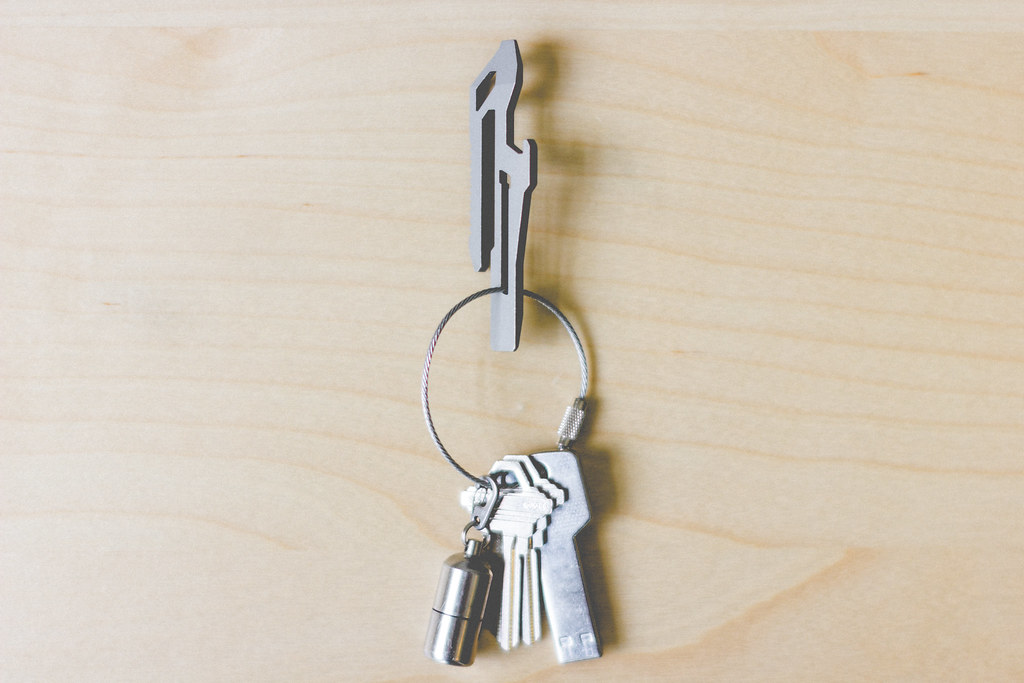
Reviewer Score: ★★★★☆
Pros:
- Serves its purpose as a knife “savior” well
- Strong general complement to an EDC with its well-chosen, versatile feature set
- Solid construction and machining
- A wholly capable, TSA-compliant and non-threatening tool to use instead of a knife for certain tasks
Cons:
- Straight edges and geometric design cues limit comfort
- Large steel version fairly heavy
- Suspension clip performance limited by length of tool and compatible hardware
Before going into this review, I really was not a believer of one-piece multitools. In my day to day, I didn’t need multiple wrench sizes, a bit driver, or a prybar, which seemed to be requisite features in more popular one-piece tools on the market. With its well-selected functions, the PRY/OPEN changed my mind about one-piece tools, so much so that it’s now a staple in my EDC. I prefer the titanium version for its smaller footprint and impressive weight, which you can purchase at the link below.


